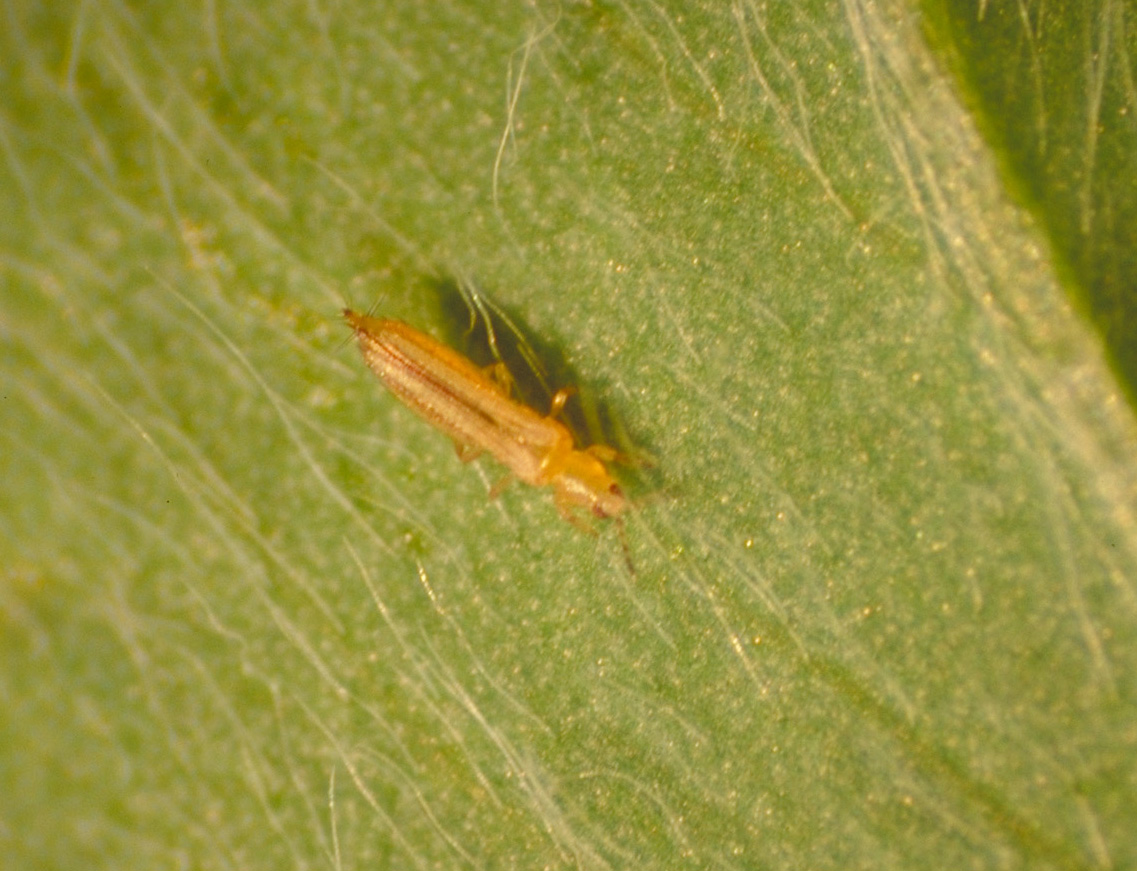Thrips
Return to Insect & Other Arthropod Pests
Thrips (Family Thripidae) are narrow, tiny insects (about 1⁄20 inch in length) that have four narrow wings fringed with hairs. While they can live in flowers and buds, thrips leave characteristic damage on leaves with their rasping mouthparts. Silvery to brown feeding scars about 1⁄4 inch in size or less, along with black tar spots (their waste material), are diagnostic. Thrips can vector tospoviruses, including tomato spotted wilt virus.

Yellow sticky card for monitoring thrips and other insect pests.
(Photo: Ric Bessin, University of Kentucky)

Thrips.
(Photo: Ric Bessin, University of Kentucky)

Damage to leaves, along with associated insect waste material (tar spots).
(Photo: Ric Bessin, University of Kentucky)
Management:
- Early detection is important. To monitor, use yellow sticky cards hung just above crop canopies (a minimum of four per high tunnel) and/or tap plant parts over white paper to inspect for thrips.
- Eliminate weeds in and around structures.
- Approved insecticides are another management option.
Biological control:
- Predatory mites can be used for biological control of thrips. Neoseiulus (Amblyseius) cucumeris and Amblyseius swirskii are commercially available.
